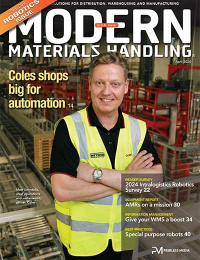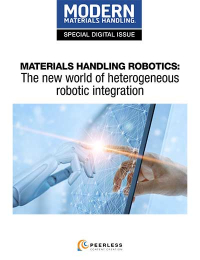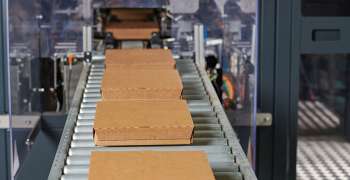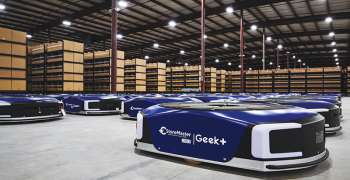New decade, new approach to case packaging
The cheapest corrugated box possible is being displaced by retail-ready packaging that protects its contents in transit and proudly displays product in the store.
Ever visited an ALDI food store? You probably couldn’t help but notice all the really nice displays for each of the various food products throughout the store. Look a little closer and the display packaging is the same as the case packaging that got it to the store.
That’s quite a contrast from other warehouse stores with so many unattractive cardboard boxes featuring few if any presentation graphics. Just as bad, the boxes are just sliced open haphazardly. Not very attractive.
You’re probably wondering: Why are there two such different approaches to case packaging? Me too. So Modern talked to Peter Fox, senior vice president of sales at SOMIC America. Fox says there’s a fundamental philosophical difference in the two approaches. On the one hand, the sole purpose of case packaging is to protect the product in transit. It’s then up to the retailer to sell it. On the other hand, why not multi-task and protect the contents while helping the retailer to stock it and sell it?
Fox says the former is starting to give way to the latter in the United States. And, it’s a trend worth watching. But first, a little background. What you see at ALDI, Fox explains, is known as store- or retail-ready packaging. In addition to protecting the product, the packaging serves a marketing purpose by visually representing the product. As is its own display, the packaging allows retailers to put the carton directly on the floor without unpacking it. Store-ready packaging is widely used in Europe.
No so much here. In the United States, case packaging is generally seen as very utilitarian—and, it’s generally expected to be as low cost as possible. No frills. It’s pretty much the same mentality as most people use when buying pallets. The case exists to create a transportable unit that protects the contents in transit. Typically, all the items are removed from the case and placed individually on shelves.
As Fox explains, a shift is underway in U.S. companies’ approach. Led by Walmart and some others, retail-ready packaging is catching on. Clearly, this is much beyond warehouse stores. Maybe 30% of all U.S. products today are in retail-ready packaging, Fox estimates. ALDI, by the way, is 100%. Fox expects United States use of retail-ready packaging to change drastically over the next five years.
Fortunately, making that shift won’t be so difficult. SOMIC America’s end-of-line packaging equipment handles both styles of packaging. “About 80% of our existing equipment accommodates both styles,” says Fox. “And about 90% of our customers take advantage of that flexibility.”
He adds that SOMIC’s packaging equipment handles various carton designs. Iit can accommodate wraparound boxes as easily as ones with lids and trays. And, the contents can range from rigid cartons to flow packs, glass jars and pouches, to name the most common types.

Article Topics
Packaging News & Resources
Registration open for Pack Expo International 2024 Pack Expo East has largest show to date Optimize Parcel Packing to Reduce Costs CMC Packaging Automation North America unveils Tech Center in Atlanta PACK EXPO East brings latest packaging technologies to Philadelphia Loftware’s cloud-based labeling solutions take center stage Flexcon unveils its innovative bin solutions More PackagingLatest in Materials Handling
Beckhoff USA opens new office in Austin, Texas Manhattan Associates selects TeamViewer as partner for warehouse vision picking ASME Foundation wins grant for technical workforce development The (Not So) Secret Weapons: How Key Cabinets and Asset Management Lockers Are Changing Supply Chain Operations MODEX C-Suite Interview with Harold Vanasse: The perfect blend of automation and sustainability Consultant and industry leader John M. Hill passes on at age 86 Registration open for Pack Expo International 2024 More Materials HandlingSubscribe to Materials Handling Magazine

Find out what the world's most innovative companies are doing to improve productivity in their plants and distribution centers.
Start your FREE subscription today.
April 2024 Modern Materials Handling

Latest Resources












